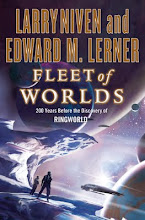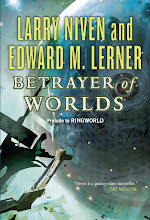While (quasi-dyslexically) clearing my desk. That is to say, I have a new PC arriving in a day or so. Seems like a good time to clear out my backlog of astro-centric news items.
 |
| Titan |
In "
The *big* picture (part 2)," I noted the recent find of a lake on Titan. Had I waited a bit, I could have reported an entire ocean. See "
Saturn moon Titan may harbor ocean below surface." A most interesting world, Titan.
Wonder when an asteroid might rain down on your head? You're not alone. See "The B612 Foundation Announces The First Privately Funded Deep Space Mission."
And if you think B612 is an obscure vitamin ... add The Little Prince to your to-read list. From Wikipedia:
The novella is both the most read and most translated book in the French language, and was voted the best book of the 20th century in France. Translated into more than 250 languages and dialects, selling over a million copies per year with sales totaling over 200 million copies worldwide, it has become one of the best-selling books ever published.
Meanwhile, it turns out Pluto has yet another companion. See "
It's not lunacy: Not-a-planet Pluto boasts 5 moons." The newly discovered body's exact size remains uncertain, but it's no more than fifteen miles across. I find it inspiring that such a tiny rock can be spotted from billions of miles away.
And on the topic of small things far away, see "
New Planet Found, Smaller Than Earth, Orbiting Distant Star." (That said, I have a quibble about the headline. Although all stars -- including our sun -- are distant by earthly standards, as stars go
this one is a neighbor at a mere thirty-three light-years.) And to be clear, this newfound world wasn't
seen per se; it was merely detectable as a slight stellar dimming as the exoplanet passed between star and Earth.
And moving from astronomy to astro
biology ...

































